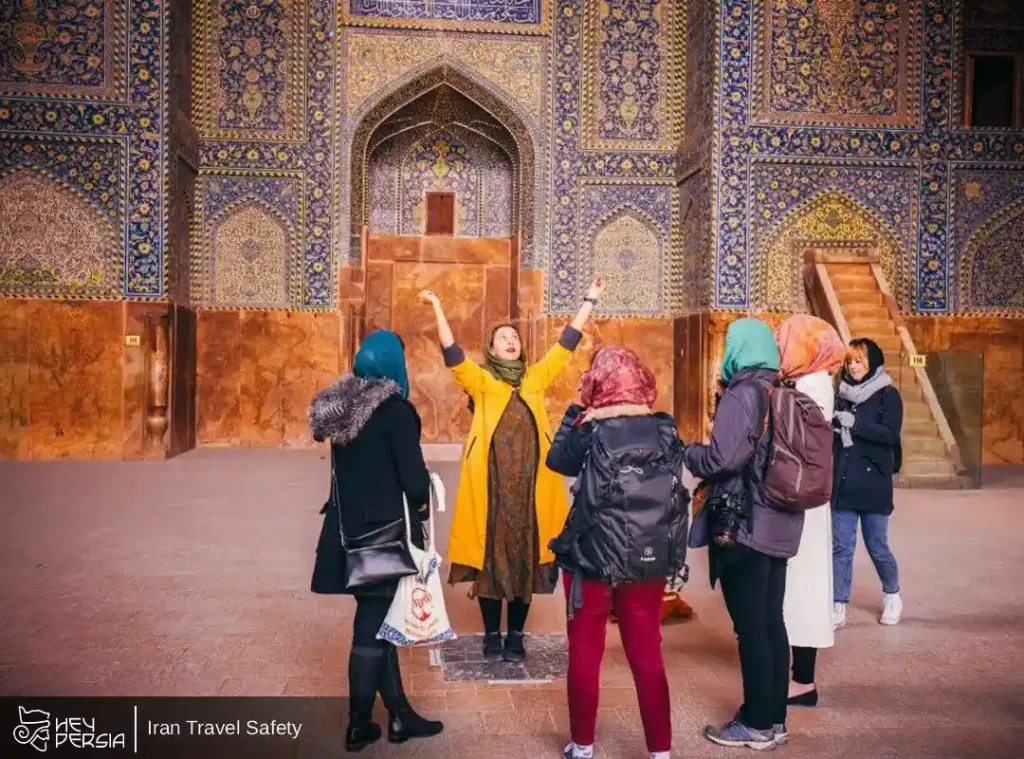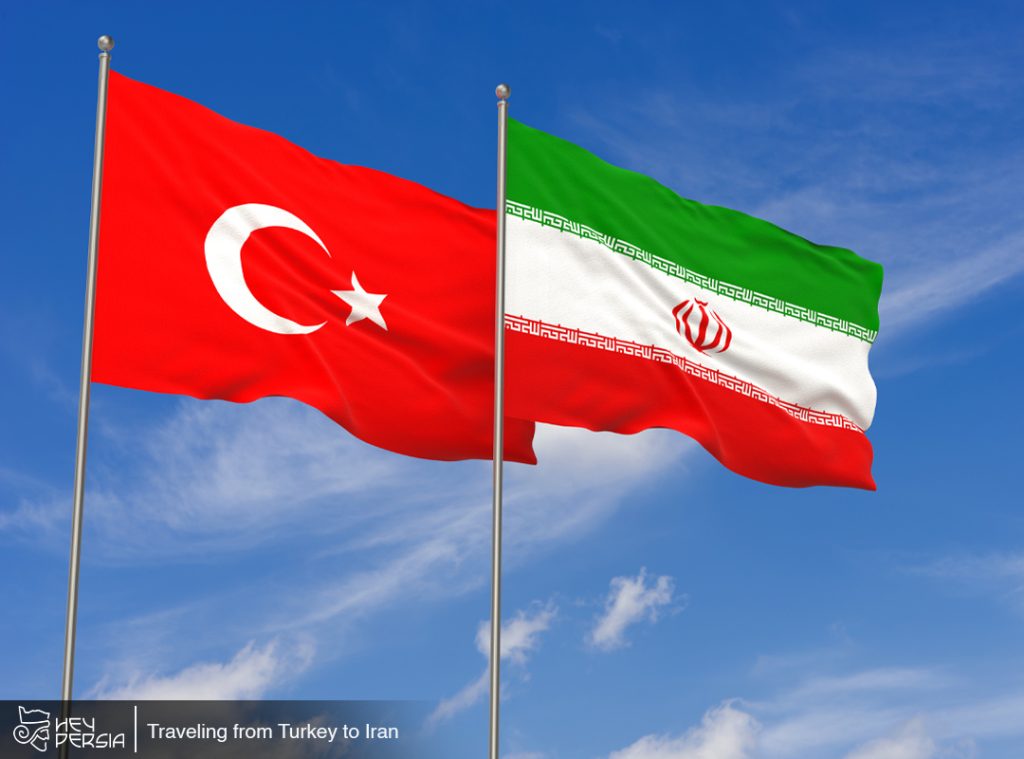When planning a trip to the Middle East, one of the first questions many travelers ask is: “Is it safe to travel to Iran?” It’s a fair question — and one that often arises due to outdated headlines or political tensions about Iran Travel Safety.
The truth is that Iran is one of the safest countries in the region for tourists. Visitors who come with an open mind often leave surprised by how peaceful, welcoming, and respectful the environment is. In fact, countless solo travelers, including women, have described their time in Iran as among the most positive travel experiences of their lives.
This updated 2025 safety guide at Hey Persia looks beyond the stereotypes, focusing on what travelers actually experience on the ground — from security and transport to health and culture — so you can plan your trip confidently and responsibly.
Table of contents
- The Reality of Safety in Iran
- Personal Safety and Local Etiquette
- Solo and Female Iran Travel Safety
- Transportation and Road Safety
- Health and Medical Safety
- Political and Social Sensitivity
- Internet and Communication in Iran Travel Safety
- Emergency Contacts and Travel Support
- Real Traveler Experiences in 2025 of Iran Travel Safety
- Iran Travel Safety
The Reality of Safety in Iran

Despite what some media portray, Iran’s crime rate against tourists remains very low. Petty crimes like pickpocketing exist, as they do anywhere, but violent crimes targeting foreigners are extremely rare.
Most visitors quickly notice a few key things:
- Streets are generally clean, well-lit, and safe to walk at night in major cities.
- Locals are eager to help tourists — often going out of their way to guide or assist them.
- Police presence is visible, especially around historical sites and public transport hubs, adding an extra layer of safety.
International travel advisories have softened in recent years, reflecting Iran’s improved tourism management and stability. In 2025, with more organized tours, eco-lodges, and travel agencies registered under government oversight, the overall experience is safer and more predictable than before.
Personal Safety and Local Etiquette
Understanding and respecting local customs is essential to having a smooth and safe trip. Iran is a conservative country with strong cultural values, but foreigners are treated with kindness when they show respect.
Dress code:
- Women should wear a loose-fitting coat or tunic and a scarf that covers their hair in public.
- Men should avoid sleeveless shirts and shorts.
This isn’t as restrictive as it may sound; most travelers adapt quickly, and Iranian fashion allows for color, creativity, and comfort.
Public behavior:
- Couples should avoid physical affection in public.
- Alcohol is banned, and drug laws are very strict — possession can lead to serious penalties.
- Photography of government or military buildings is prohibited, but locals usually enjoy being photographed if you ask politely.
Following these norms not only keeps you out of trouble but also shows cultural awareness, which locals deeply appreciate.
Solo and Female Iran Travel Safety

Many solo travelers, especially women, wonder what to expect in Iran. Fortunately, countless female bloggers and travel writers have confirmed that Iran is surprisingly comfortable and respectful for solo women.
Women-only areas exist in public transportation, such as metro cars and sections of buses, providing additional comfort. Female travelers often mention feeling safe walking alone during the day or visiting cafés and bazaars without harassment.
Some useful tips:
- Dress modestly to blend in.
- Choose accommodations in central or reputable areas.
- Use trusted transport apps like Snapp or Tap30 for rides.
- Learn a few phrases in Persian; a friendly “salaam” (hello) goes a long way.
Iranians are protective of their guests — especially foreign women — and it’s common for locals to check in to ensure you’re okay or offer help.
Transportation and Road Safety
Iran’s transportation network is extensive, connecting cities through highways, trains, and domestic flights. Most long-distance travel is safe and efficient, though it helps to keep a few things in mind:
- Taxis and ride-hailing: Use Snapp or Tap30 instead of hailing cars on the street. They’re reliable, inexpensive, and available in English.
- Domestic flights: Iran’s airlines are generally safe, but flight delays are common. Plan some flexibility into your schedule.
- Road trips: Highways are modern, but local driving can be aggressive. It’s safer to hire a professional driver rather than self-drive.
- Trains and buses: Comfortable and affordable options, especially for longer journeys. VIP buses offer wide seats and onboard refreshments.
Public transport is safe for both men and women, though crowded at rush hours.
Health and Medical Safety
Iran’s healthcare system is one of the best in the region, with well-equipped hospitals and trained doctors. In 2025, Iran Travel Safety continues to expand medical tourism, especially for dental and cosmetic treatments, due to high standards and low costs.
Here’s what to keep in mind:
- No mandatory vaccines are required for entry.
- Carry travel insurance that covers medical expenses in Iran.
- Tap water is safe to drink in most cities, but bottled water is widely available.
- Pharmacies are common, and most medicines are accessible without difficulty.
In case of emergencies, dialing 115 connects you to ambulance services. Many major hospitals in Tehran and Shiraz have English-speaking staff.
Political and Social Sensitivity
While daily life in Iran is peaceful, political discussions can be sensitive. Avoid commenting on politics, religion, or the government in public spaces or online while in the country.
Locals are often curious about your country and eager to exchange ideas — just steer conversations toward culture, travel, or history instead. Respect for privacy and discretion is highly valued in Iranian society.
Also note that protests or large gatherings should be avoided, even if they seem peaceful. Foreigners are advised to observe from a distance or change routes if necessary.
Internet and Communication in Iran Travel Safety
Internet access in Iran is reliable in most areas, though some websites and social media platforms may be restricted. Many travelers use VPNs to access their usual apps safely.
At major airports, you can buy SIM cards from Irancell or Hamrah-e-Aval, which provide good 4G coverage and inexpensive data plans. Using WhatsApp, Telegram, and Instagram (with a VPN) is common among locals, so staying connected with your hosts or guides is easy.
Emergency Contacts and Travel Support
For additional peace of mind, it’s wise to register your trip with your country’s embassy or consulate. Keep the following emergency contacts handy:
- Police: 110
- Ambulance: 115
- Fire department: 125
- Tourist Police: Available in major cities; officers speak basic English and assist travelers.
Embassies in Tehran, including those of European, Asian, and Latin American countries, can help replace lost passports or assist in emergencies.
Real Traveler Experiences in 2025 of Iran Travel Safety
According to recent reviews from travel blogs and platforms like TripAdvisor and Lonely Planet, most tourists describe Iran as “incredibly safe and friendly.”
Travelers frequently mention being invited for tea by strangers, receiving free rides, or having shopkeepers refuse payment as a gesture of hospitality. These experiences reflect Iran’s deep-rooted culture of kindness toward guests.
Even solo travelers in 2025 have noted that they felt safer in Iran than in many Western cities, thanks to the strong community values and hospitality that define Iranian society.
Iran Travel Safety
So, is it safe to travel to Iran in 2025?
The answer, based on both facts and firsthand experiences, is a confident yes. Iran remains one of the safest and most rewarding destinations in the Middle East for respectful and informed travelers.
Of course, like anywhere, common sense goes a long way — stay aware of your surroundings, respect local traditions, and follow laws. But once you arrive, you’ll quickly realize that Iran’s biggest risk is falling in love with its people, poetry, and timeless beauty — and wanting to return again and again.





